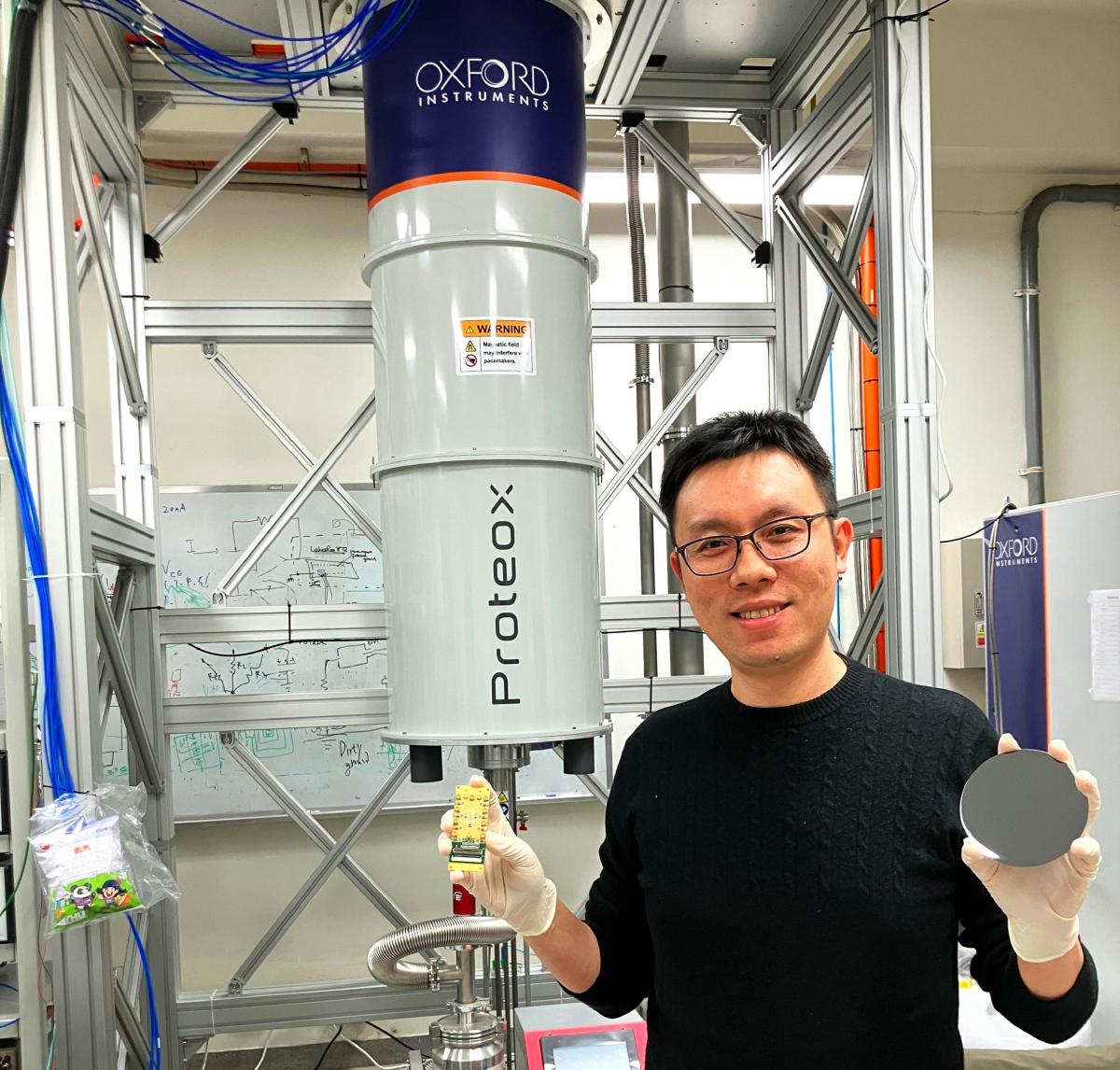Applications
 Part of the Oxford Instruments Group
Part of the Oxford Instruments Group
Expand
Collapse
With Professor Tzu-Kan Hsiao, Assistant Professor at National Tsing-Hua University, Taiwan
As the ongoing race towards quantum computing continues, spin qubits are one important potential candidate for building solid-state quantum computers, trapping single electrons and using their natural magnetic properties - or spin - to process information.
One researcher exploring this exciting field is Professor Tzu-Kan Hsiao. Having completed his PhD in acoustic-driven single electron transport and single-photon emission semiconductors at the University of Cambridge, Prof. Hsiao discovered his passion for spin qubits during his post-doctorate with QuTech at TUDelft in the Netherlands from 2019 - 2022. Last year, he moved to National Tsing-Hua University (NTHU) in Taiwan to set up the Spin Quantum Information lab, where a ProteoxMX is installed to support the lab’s spin qubit research.
The lab is focussed on fabricating high-quality quantum dot spin qubits based on silicon and germanium, ultimately directed at becoming devices for quantum computing. Alongside this, the research group is also using the spin-based quantum simulators to test theoretical models of related physics, like high temperature superconductivity. We spoke with Prof. Hsiao to find out more.
“To make a spin qubit, what you need is to fabricate a nanostructure - what we call a quantum dot - to confine individual electrons, or holes. These electron holes have an intrinsic property called a spin, which you can think of as a small magnet. Once you confine these small magnets, you can apply a magnetic field to split the spin down and spin up state. This allows you to use the 0 and 1 in the qubit.”
When setting up the lab, Prof. Hsiao chose to install a ProteoxMX dilution refrigerator: “I chose the ProteoxMX for several reasons. I had become familiar with Oxford Instruments during my post-doc and enjoyed using its equipment. But most importantly, the design of the ProteoxMX is ideal for our research purposes at NTHU with an easy sample loader and a very fast cooling time.”
Being able to load their samples into the fridge without opening the whole system and having a fast cooling time means that the research team can keep up a quick turnaround time on experiments. A sample loaded at the end of the day is ready to be measured the next, allowing the team to measure new devices quickly.
“This is really important for us as a new lab,” Prof. Hsiao told us, “because we need to develop our fabrication recipes and adapt our approaches as we become more established. All the information we get from this device testing helps us optimise our fabrication recipes to make better devices in the long-run.”

Once they have made the quantum-dot devices, the team will complete high-fidelity spin qubit control and read-out. “This is pretty common in the spin qubit community, but what is more unique in our research lab is we are using the arrays of quantum dots as a simulator for condensed matter physics,” Prof. Hsiao explained.
The idea is that by confining each individual electron and spin, you can control each electron spin interaction. From there, you can control the overall interaction of the whole system, which allows you to explore the ground state, or lowest energy state, of this system and therefore understand the basic material properties. This is a near-term goal of quantum devices.
The Spin Quantum Information lab at NTHU recently made its first batch of quantum dot devices and the preliminary results look promising. Once they have established a recipe to create multi-quantum dot devices, the next goal would be to progress to exploring many-body systems.
Spin qubit experiments help us understand how certain materials work. For example, we don’t fully understand how some superconductors work - and the reason for a material to become high temperature superconducting is a question that remains unanswered. Exploring the ground state or quantum dynamics of a many-body system like this may help unlock further insight into the inner workings of these materials.
The lab currently has eight Masters’ students, and the field is becoming increasingly favoured. “This field of research is becoming more popular,” Prof. Hsiao told us, “I see students in the physics department coming up to me more, interested in exploring quantum research. Younger people are gaining interest in this area of physics. They want to join the labs doing this kind of work and be part of what I would say is one of the most advanced technological research areas at this moment.”